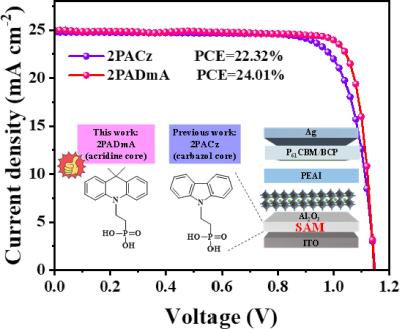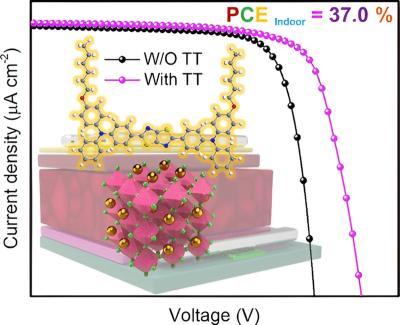The majority of monolithic perovskite/Si tandem solar cells (TSCs) have been built on heterojunction (HJT) Si solar cells, which have seen limited industrial uptake due to manufacturing cost and concern over the viability of metal electrodes and transparent conductive oxides (TCOs) incorporating expensive elements. Recently, researchers from The Australian National University, University of Melbourne and University of New South Wales demonstrated that high efficiencies of perovskite/Si TSCs can be achieved with Si bottom cells based on a double-side poly-Si/Si dioxide (SiO2) passivating contact (poly-Si cell) without silver or transparent conductive oxides (TCOs), fabricated using mass-production techniques.
In addition, a novel low-absorption, dopant-free bilayer-structured hole transport layer (HTL) composed of ultra-thin poly(N,N′-bis-4-butylphenyl-N,N′-bisphenyl)benzidine (Poly-TPD) and 2,2′,7,7′-tetra(N,N-di-p-tolyl)amino-9,9-spirobifluorene (Spiro-TTB) double layers was developed for the perovskite top cell, which passivates the perovskite surface and enhances the near-interface conductivity, thus increasing the open-circuit voltage and fill factor.





